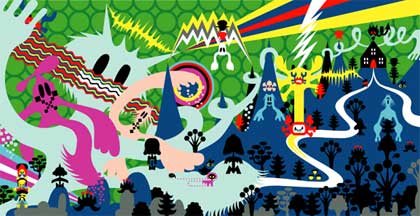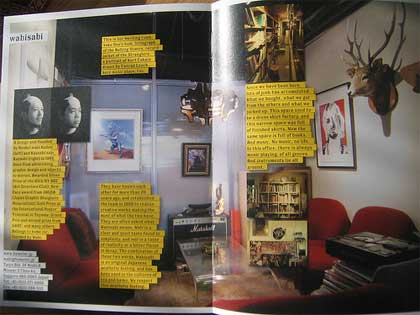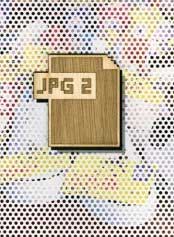 JPG 2: Japan Graphics, edited by Tomoko Sakamoto. (Amazon USA
JPG 2: Japan Graphics, edited by Tomoko Sakamoto. (Amazon USA

Editor Actar says: Volume two of ‘JPG, Japan Graphics,’ is a comprehensive survey of contemporary Japanese graphic design and illustration. The changes in Japanese graphic design after the first volume have proved to be far beyond our imagination. Instead of ‘more copies, higher resolution, to a wider audience’, there is a greater focus on individual and original works. JPG 2 brings together over 20 design teams, showcasing the evolution of teams from the first JPG as well as showcasing new projects, new teams, and the best contemporary design talents.
I’m not an expert in Japanese graphic design and illustration, hence my interest in JPG2. At the end of the day, i’d rather sit down and read about something only vaguely related to my blog. And gosh! did i have fun with that book.
There are hundreds of pages covered with illustrations which means that my brain could (kinf of) switch to pause mode. What makes the volume special and enjoyable is that the editor didn’t ask directly to the designers which technical tools they use in their practice, what their background is or sources of influence. Instead, she lets readers discover it in a more subtle way throughout the “Who’s Who” chapter and the pages in which designers talk freely about and show images of their favourite place(s). The designers open their doors and we get a glimpse on the way they live, their favourite place, their pets, what they like to eat at lunchtime, who they meet, what they see from their office window, etc. Add to that images of their working space and you get a rapid and intimate snapshot of their everyday life, of what makes them smile or what triggers their imagination.
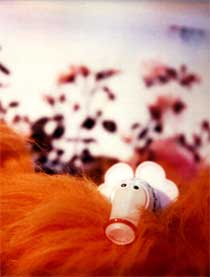
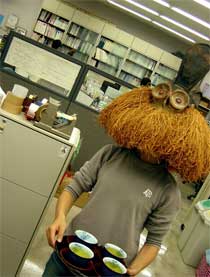
By Namaiki
The book is divided into 13 chapters: one explains how photographic images meet graphic design, another is about the way collage of objects and scenes create imaginary landscapes, another part demonstrates how graphic design can be translated into objects, elsewhere one can see how computer-made stain, deformation or bad focus can be give rise to perfectly controlled textures, etc.
One of the most interesting idea conveyed by the book is that today hand-drawn lines, fabric, hair, even sounds are part of the experiments that prove that digital design is getting closer and closer to the analog sphere, as it is the case with other forms of design or many aspect of life for that matter.

